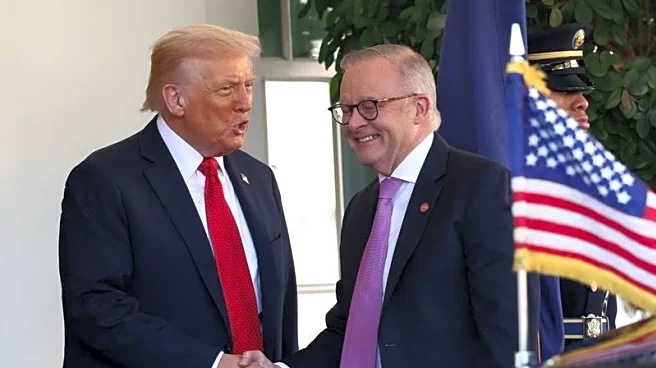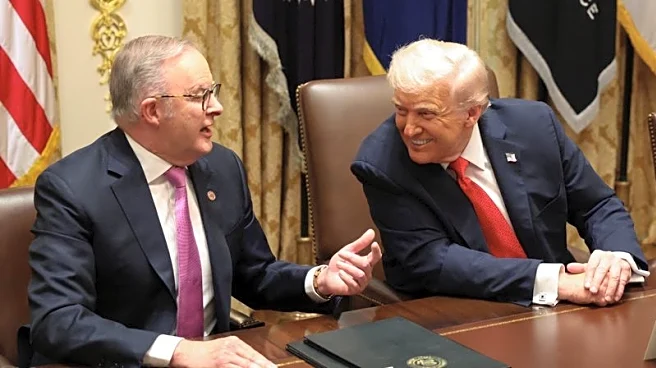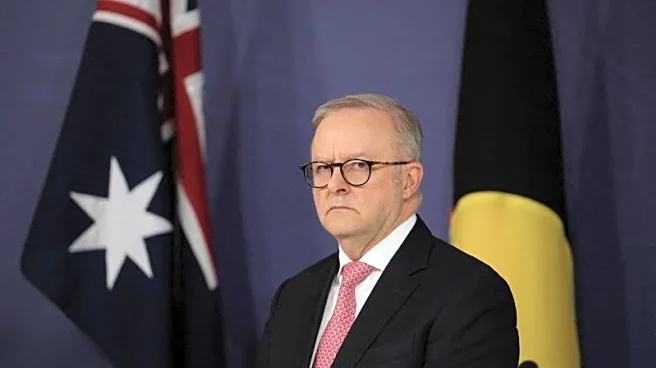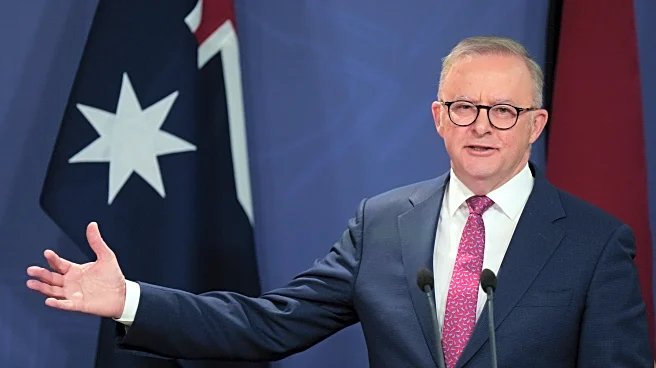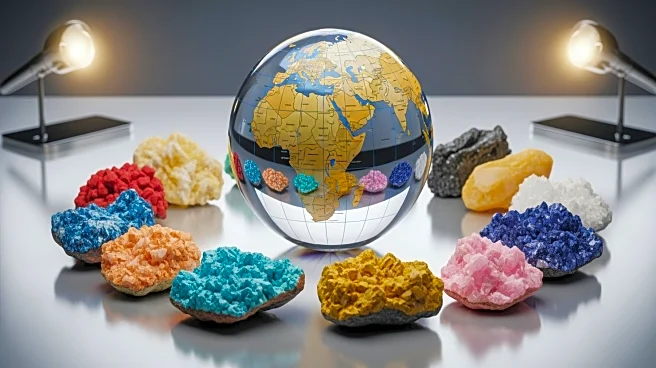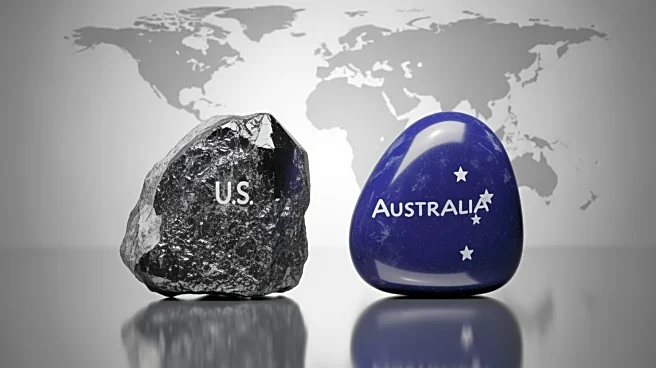What's Happening?
President Donald Trump and Australian Prime Minister Anthony Albanese have signed a significant agreement aimed at enhancing the supply of critical minerals, including rare earths, between the United States and Australia. This agreement, announced during
a meeting at the White House, outlines plans for projects valued at up to $8.5 billion. The initiative is part of a broader strategy to reduce dependency on China, which currently dominates the global rare earths supply chain. Rare earths are essential for various high-tech applications, including U.S. weapons platforms, semiconductor manufacturing, and electric vehicles. The agreement includes a framework for investment, with the Export-Import Bank of the United States set to issue financing letters worth over $2.2 billion, potentially unlocking $5 billion in total investments. This move comes as China has recently imposed strict export controls on rare earths, escalating trade tensions.
Why It's Important?
The agreement between the U.S. and Australia is a strategic move to counter China's dominance in the rare earths market, which is crucial for national security and technological advancement. By diversifying the supply chain, the U.S. aims to secure a stable and reliable source of these critical minerals, reducing the risk of supply disruptions. This development is significant for industries reliant on rare earths, such as defense, technology, and automotive sectors, which could benefit from more stable pricing and supply. Additionally, the collaboration with Australia, a key ally, strengthens geopolitical ties and economic cooperation, potentially leading to further joint ventures in critical mineral exploration and processing.
What's Next?
The next steps involve the implementation of the outlined projects, with both countries expected to contribute $1 billion over the next six months to kickstart immediate initiatives. The U.S. and Australia will likely continue to explore additional opportunities for collaboration in the critical minerals sector. Meanwhile, the U.S. may face further trade tensions with China, especially if the proposed tariffs on Chinese goods are enacted. Stakeholders in the rare earths market will be closely monitoring these developments, as they could influence global supply chains and pricing dynamics.
Beyond the Headlines
This agreement could have long-term implications for the global rare earths market, potentially leading to a shift in the balance of power away from China. It also highlights the growing importance of securing critical mineral resources as nations seek to bolster their technological capabilities and national security. The collaboration may encourage other countries to pursue similar partnerships, fostering a more diversified and resilient global supply chain for rare earths.


